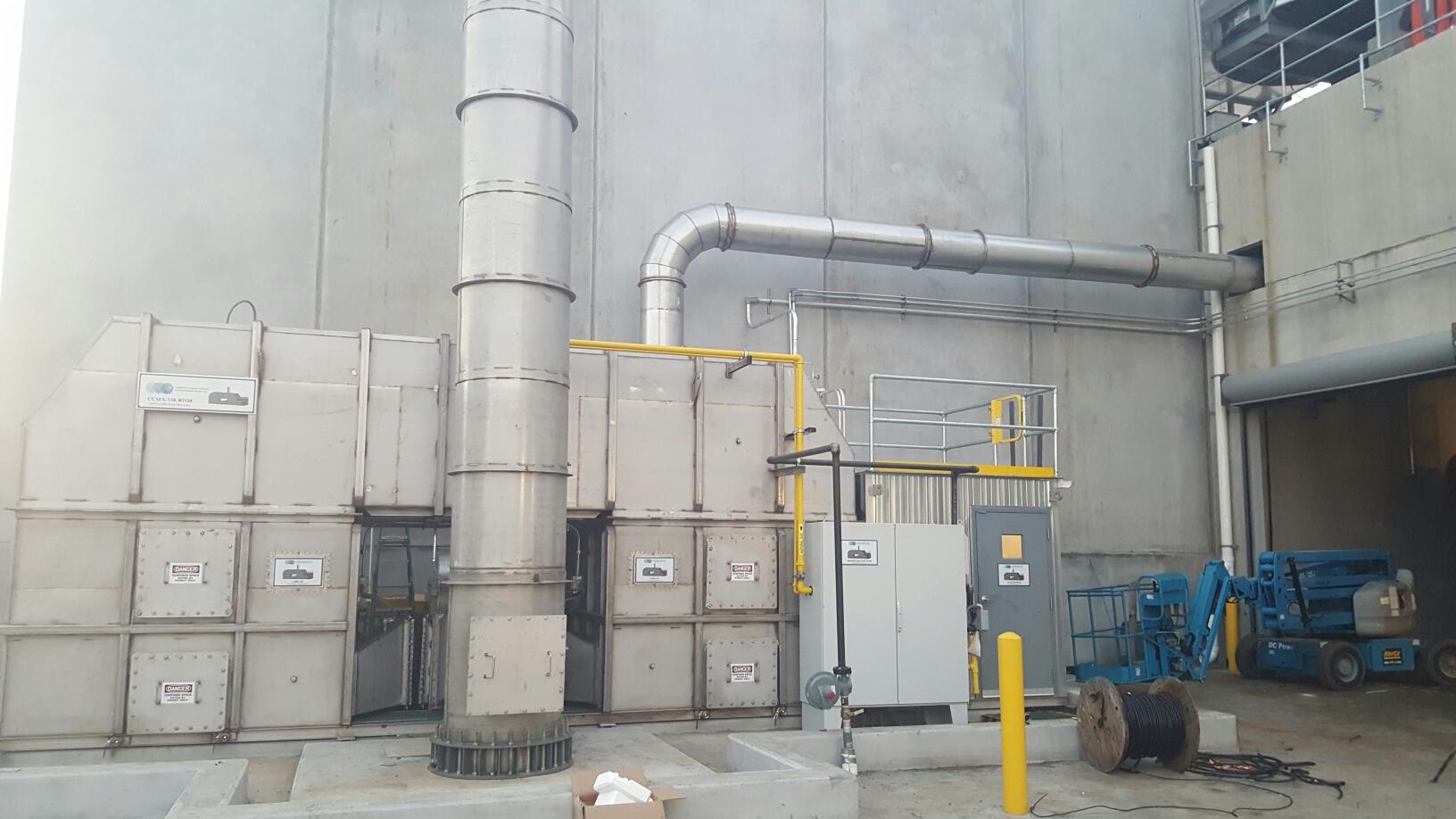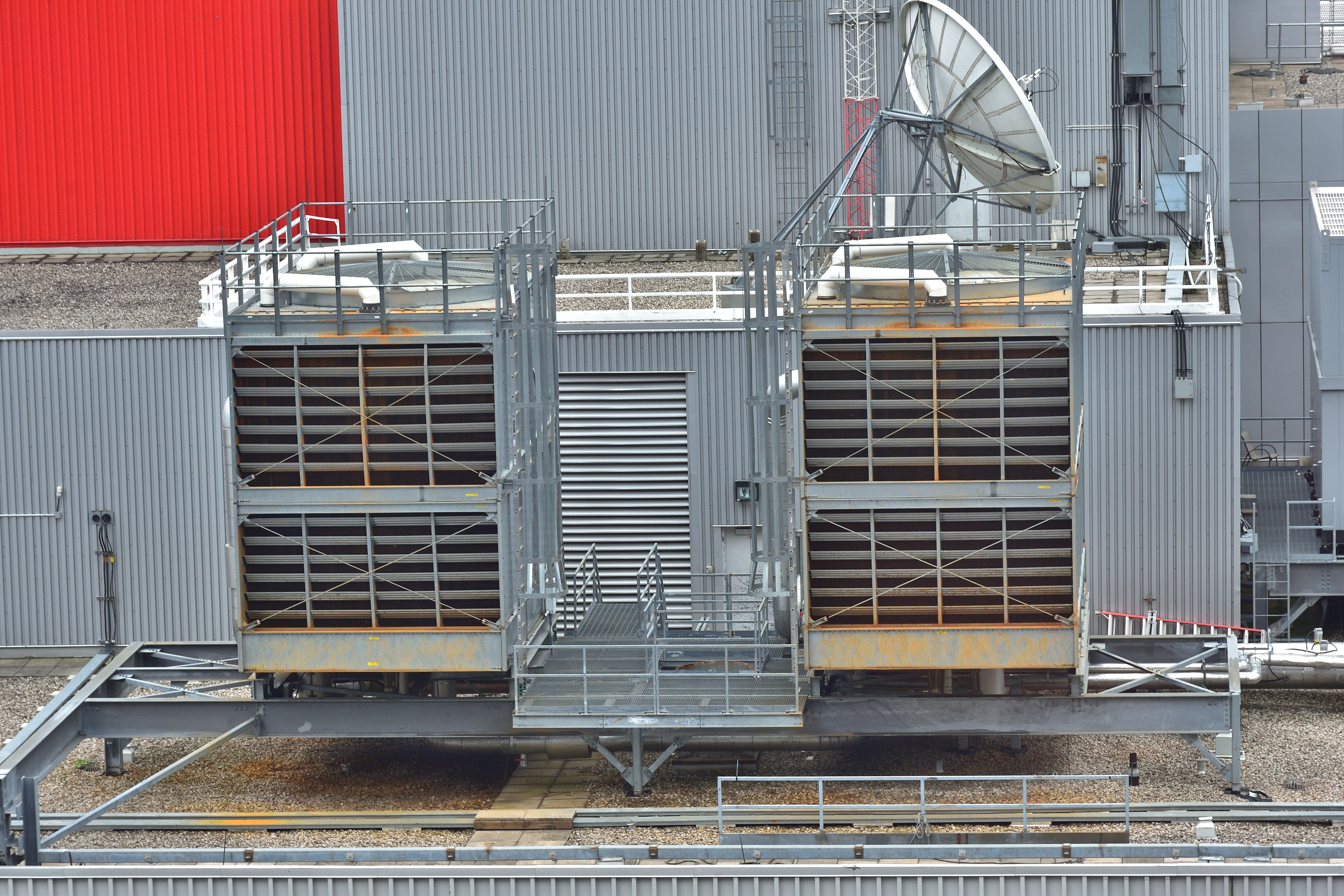|
Cardinal Power Plant
Cardinal Power Plant is a 1.8-gigawatt (1,800 MW) coal power plant located south of Brilliant, Ohio in Jefferson County, Ohio. The power plant has three units. Cardinal is co-owned with Unit 1 owned by American Electric Power's (AEP) subsidiary, AEP Generation Resources. Units 2–3 are owned by Buckeye Power, a utility cooperative. It began operations in 1967. History Construction of Cardinal started in November 1963. The project was a joint venture of Ohio Power (a forerunner of AEP) and Buckeye Power. Buckeye Power obtained loans from the Rural Electric Administration and financing through Kuhn, Loeb & Co. and the Ohio Company. Cardinal was built adjacent to Ohio Power's Tidd Plant. The plant is named after the State Bird of Ohio, the cardinal. Units 1 and 2 began commercial generation in 1967 at a cost of $131 million. Unit 3 began generation in 1977 after six years of construction at a cost of $220 million. In 2017, AEP and Buckeye Power reached an agreement for Buckeye Powe ... [...More Info...] [...Related Items...] OR: [Wikipedia] [Google] [Baidu] |
Wells Township, Jefferson County, Ohio
Wells Township is one of the fourteen townships of Jefferson County, Ohio, United States. The 2020 census found 2,491 people in the township. Geography Located in the southeastern part of the county along the Ohio River, it borders the following townships: * Cross Creek Township - north * Steubenville Township - northeast * Warren Township - south * Smithfield Township - west * Wayne Township - northwest Brooke County, West Virginia lies across the Ohio River to the east. Part of the village of New Alexandria is located in northern Wells Township. As well, two unincorporated communities lie in Wells Township: Brilliant in the east, and Weems in the northwest. Name and history Wells Township was founded in 1823. It was named for Bezaleel Wells, a founder of Steubenville. It is the only Wells Township statewide. Government The township is governed by a three-member board of trustees, who are elected in November of odd-numbered years to a four-year term beginning on the fo ... [...More Info...] [...Related Items...] OR: [Wikipedia] [Google] [Baidu] |
LO-NOx Burner
A LO burner is a type of burner that is typically used in utility boilers to produce steam and electricity. Background The first discovery Around 1986 John Joyce (of Bowin Cars fame), an influential Australian inventor, first learned about oxides of nitrogen ( NOx) and their role in the production of smog and acid rain. His first introduction to the complexities of the subject was brought about by the work of Fred Barnes and Dr John Bromley from the state Energy Commission of Western Australia. The vast majority of the research and development stretching back over twenty years was about large scale industrial burners and complex mechanisms which, in the end, did not produce what one would consider low NOx (2 ng/J or ~ 4 ppm at 0% O2 on dry basis). In fact at that time, 15 ng/J NO2 appears to have been considered low NO2. The one clear message that did flow through all the mass of information he studied, was the effect of temperature on the formation of NOx. "Need is ... [...More Info...] [...Related Items...] OR: [Wikipedia] [Google] [Baidu] |
Energy Infrastructure Completed In 1977
In physics, energy (from Ancient Greek: ἐνέργεια, ''enérgeia'', “activity”) is the quantitative property that is transferred to a body or to a physical system, recognizable in the performance of work and in the form of heat and light. Energy is a conserved quantity—the law of conservation of energy states that energy can be converted in form, but not created or destroyed. The unit of measurement for energy in the International System of Units (SI) is the joule (J). Common forms of energy include the kinetic energy of a moving object, the potential energy stored by an object (for instance due to its position in a field), the elastic energy stored in a solid object, chemical energy associated with chemical reactions, the radiant energy carried by electromagnetic radiation, and the internal energy contained within a thermodynamic system. All living organisms constantly take in and release energy. Due to mass–energy equivalence, any object that has mass ... [...More Info...] [...Related Items...] OR: [Wikipedia] [Google] [Baidu] |
List Of Power Stations In Ohio
This is a list of electricity-generating power stations in the U.S. state of Ohio, sorted by type and name. In 2019, Ohio had a total summer capacity of 28,464 MW and a net generation of 120,001 MWh. The corresponding electrical energy generation mix was 43.3% natural gas, 39.6% coal and petroleum coke, 14.3% nuclear, 1.7% wind, 0.6% biomass, 0.3% hydroelectric, 0.1% solar, and 0.1% petroleum. Natural Gas Coal Nuclear Wind Solar Hydroelectricity Battery Storage Closed plants See also *List of power stations in the United States References {{Power stations in the United States Power stations Ohio Ohio () is a U.S. state, state in the Midwestern United States, Midwestern region of the United States. Of the List of states and territories of the United States, fifty U.S. states, it is the List of U.S. states and territories by area, 34th-l ... ... [...More Info...] [...Related Items...] OR: [Wikipedia] [Google] [Baidu] |
Public Utilities Commission Of Ohio
The Public Utilities Commission of Ohio (PUCO) is the public utilities commission of the U.S. state of Ohio, charged with the regulation of utility service providers such as those of electricity, natural gas, and telecommunications as well as railroad safety and intrastate hazardous materials transport. Background Responsibilities The Commission is responsible for: *Enforcement of laws against service deemed unfair or unsafe *Hearing disputes between utilities and residential, business, and industrial customers, as well as between competing utilities. *Assuring availability of residential, business, and industrial utility services *Providing consumers with relevant information about their rights and responsibilities *Regulating rates for utility services in which there is little to no competition (i.e. electricity and natural gas services) *Periodically creating and changing Ohio Administrative Code that is related to its mission *Acting in some manner to relate the relevant A ... [...More Info...] [...Related Items...] OR: [Wikipedia] [Google] [Baidu] |
United States Environmental Protection Agency
The Environmental Protection Agency (EPA) is an independent executive agency of the United States federal government tasked with environmental protection matters. President Richard Nixon proposed the establishment of EPA on July 9, 1970; it began operation on December 2, 1970, after Nixon signed an executive order. The order establishing the EPA was ratified by committee hearings in the House and Senate. The agency is led by its administrator, who is appointed by the president and approved by the Senate. The current administrator is Michael S. Regan. The EPA is not a Cabinet department, but the administrator is normally given cabinet rank. The EPA has its headquarters in Washington, D.C., regional offices for each of the agency's ten regions and 27 laboratories. The agency conducts environmental assessment, research, and education. It has the responsibility of maintaining and enforcing national standards under a variety of environmental laws, in consultation with state, ... [...More Info...] [...Related Items...] OR: [Wikipedia] [Google] [Baidu] |
Natural Gas Power Plant
A gas-fired power plant or gas-fired power station or natural gas power plant is a thermal power station which burns natural gas to generate electricity. Natural gas power stations generate almost a quarter of world electricity and a significant part of global greenhouse gas emissions and thus climate change. However they can provide seasonal dispatchable generation to balance variable renewable energy where hydropower or interconnectors are not available. Basic concepts: heat into mechanical energy into electrical energy A gas-fired power plant is a type of fossil fuel power station in which chemical energy stored in natural gas, which is mainly methane, is converted successively into: thermal energy, mechanical energy and, finally, electrical energy. Although they cannot exceed the Carnot cycle limit for conversion of heat energy into useful work the excess heat may be used in cogeneration plants to heat buildings, produce hot water, or to heat materials on an ... [...More Info...] [...Related Items...] OR: [Wikipedia] [Google] [Baidu] |
Waste Heat
Waste heat is heat that is produced by a machine, or other process that uses energy, as a byproduct of doing work. All such processes give off some waste heat as a fundamental result of the laws of thermodynamics. Waste heat has lower utility (or in thermodynamics lexicon a lower exergy or higher entropy) than the original energy source. Sources of waste heat include all manner of human activities, natural systems, and all organisms, for example, incandescent light bulbs get hot, a refrigerator warms the room air, a building gets hot during peak hours, an internal combustion engine generates high-temperature exhaust gases, and electronic components get warm when in operation. Instead of being "wasted" by release into the ambient environment, sometimes waste heat (or cold) can be used by another process (such as using hot engine coolant to heat a vehicle), or a portion of heat that would otherwise be wasted can be reused in the same process if make-up heat is added to the s ... [...More Info...] [...Related Items...] OR: [Wikipedia] [Google] [Baidu] |
Cooling Tower
A cooling tower is a device that rejects waste heat to the atmosphere through the cooling of a coolant stream, usually a water stream to a lower temperature. Cooling towers may either use the evaporation of water to remove process heat and cool the working fluid to near the wet-bulb air temperature or, in the case of ''dry cooling towers'', rely solely on air to cool the working fluid to near the dry-bulb air temperature using radiators. Common applications include cooling the circulating water used in oil refineries, petrochemical and other chemical plants, thermal power stations, nuclear power stations and HVAC systems for cooling buildings. The classification is based on the type of air induction into the tower: the main types of cooling towers are natural draft and induced draft cooling towers. Cooling towers vary in size from small roof-top units to very large hyperboloid structures (as in the adjacent image) that can be up to tall and in diameter, or recta ... [...More Info...] [...Related Items...] OR: [Wikipedia] [Google] [Baidu] |
Black & Veatch
Black & Veatch (BV) is the largest engineering firm in the Kansas City metropolitan area. Founded in 1915 in Kansas City, Missouri it is now headquartered in Overland Park, Kansas It is a global engineering, procurement, construction (EPC) and consulting company specializing in infrastructure development in power, oil and gas, water, telecommunications, government, mining, data centers, smart cities and banking and finance markets. In 2020, BV was the 7th largest majority employee-owned company in the United States. In 2020, with revenues of $3.7 billion, the company was ranked by ''Forbes'' as the 123rd largest privately owned company in the United States. ''Engineering News-Record'', which compiles and publishes rankings of the largest construction and engineering firms annually, measured by gross revenues, ranked BV first in telecommunications, second in power, fifth in water, eighth in wastewater, 13th in international markets, and 15th in the overall top 500 design category ... [...More Info...] [...Related Items...] OR: [Wikipedia] [Google] [Baidu] |
Sulfur Dioxide
Sulfur dioxide ( IUPAC-recommended spelling) or sulphur dioxide (traditional Commonwealth English) is the chemical compound with the formula . It is a toxic gas responsible for the odor of burnt matches. It is released naturally by volcanic activity and is produced as a by-product of copper extraction and the burning of sulfur- bearing fossil fuels. Structure and bonding SO2 is a bent molecule with ''C''2v symmetry point group. A valence bond theory approach considering just ''s'' and ''p'' orbitals would describe the bonding in terms of resonance between two resonance structures. The sulfur–oxygen bond has a bond order of 1.5. There is support for this simple approach that does not invoke ''d'' orbital participation. In terms of electron-counting formalism, the sulfur atom has an oxidation state of +4 and a formal charge of +1. Occurrence Sulfur dioxide is found on Earth and exists in very small concentrations and in the atmosphere at about 1 ppm. On other p ... [...More Info...] [...Related Items...] OR: [Wikipedia] [Google] [Baidu] |




